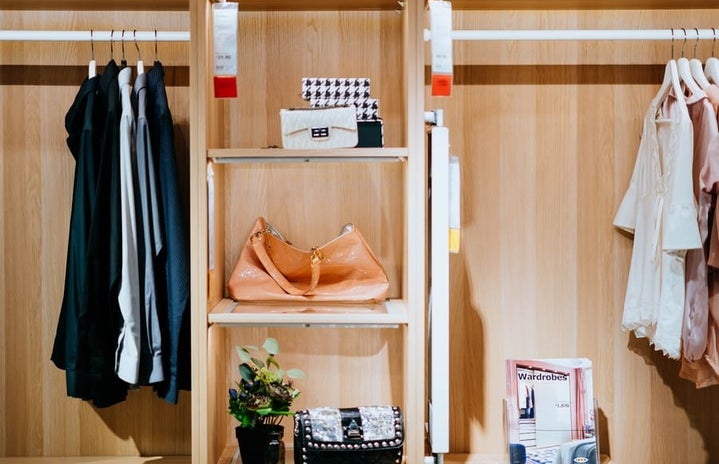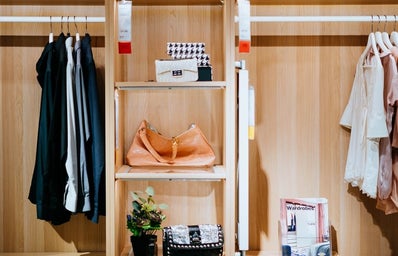As I was doing some online shopping, I was thinking about how rapidly popular styles rotate. It seems like the shelf life of some clothing is becoming even shorter as new trends pop up every day. The battle between wearing a timeless outfit and wearing an on-trend style has been brewing for as long as fashion’s history itself. Although it saves money and time by wearing a basic uniform, it is also much less exciting and not as trendy with the times.
Micro-trends usually last around three to five years, while macro-trends can be popular for five to ten years. Macro-trends define the style is of a certain decade, while micro-trends could be a shorter-lived obsession toward a certain pattern. Fads have an even shorter expiration date, as they seem to disappear as soon as they arrive. Fads and micro-trends are the bigger issues here, as they are extremely difficult to keep up with and are very harmful to the environment.
Sustainability
The biggest issue with micro-trends and fads comes from their environmental impact. The textile industry is already known for being extremely damaging and was even ranked as the second-largest polluter after oil companies. Succumbing to everchanging trends and fast fashion forces people to throw out their clothing after fewer uses. If you keep buying clothing that you only want to wear for a short period of time, then companies will have to keep increasing the supply, which, in turn, negatively impacts the environment. In 2019, there were 208 million pounds of waste from single-wear outfits. Wearing clothing as many times as possible is great for the environment — and your wallet.
The term fast fashion actually originated in the early nineties, when Zara crept up on the scene. Now, stores such as these and many others are becoming increasingly popular, despite their unsustainable and inhumane production process.
Fast fashion is also a major contributor to the water crisis, as fast fashion is the second-largest consumer of water. These environmental impacts are extremely concerning and are only proliferated by our continued reliance on the rapid turnover of clothing brands. We need to put less pressure on ourselves and the environment to keep up with our clothing wants.
College Trends
As college students, it seems like there is always something changing. Everyone wants to be wearing a new, cute outfit when they’re with friends. This pressure to not repeat outfits too frequently is very damaging for multiple reasons.
First off, it forces people to spend an excessive amount of money on new clothes that might only be worn for a certain occasion. This trend will then lead to people shopping at fast-fashion stores in order to avoid the high price of more sustainable options. Many people turn to stores such as Shein for cheap and trendy clothing.
Another reason why we see this issue so frequently at college is due to the reliance on influencer culture. Many students are very active on social media and follow influencers who are constantly promoting new clothes and deals. You can also easily find tons of clothing haul videos online, which promote excessive buying. Many influencers are sent clothes just for promotion, which then leads to more people buying them to keep up with the trends. This cycle of buying and wearing is constantly moving and allows for the fashion industry to keep pushing more fads and micro-trends.
Tips for Building a Better Wardrobe
While considering these issues, I began to wonder how I could change my own shopping habits in the future. Obviously, one of the best solutions is to thrift or borrow clothes from others. Due to the rapid fashion cycle, you often find trendy pieces at the thrift store. If one of your friends buys something from a fast fashion website, you could ask to borrow it so that you can limit your impact — even just a little. Another tip is to donate your old clothes instead of just throwing them out. It is very important for clothing to stay out of the trash and in someone’s closet.
When I buy new clothes, I always like to look in my own closet to make sure that I would actually wear the piece. I have found that having a wardrobe with fewer flashy patterns prevents me from getting tired of my clothing, as I can always find new ways to style things and make them feel unique. Staple pieces don’t have to be boring, especially if you invest in a few nice things that you will always want. I have found that it never goes out of style to just wear nice denim with a plain shirt that is trendy but sleek.
The most important thing when it comes to fashion is to wear what you feel comfortable in, even if it isn’t the trend. Making your own trends is the easiest way to avoid fast fashion, as you can use your creativity to reuse the clothing around you. In the end, caring for the environment is one of the trendiest things you can do!


